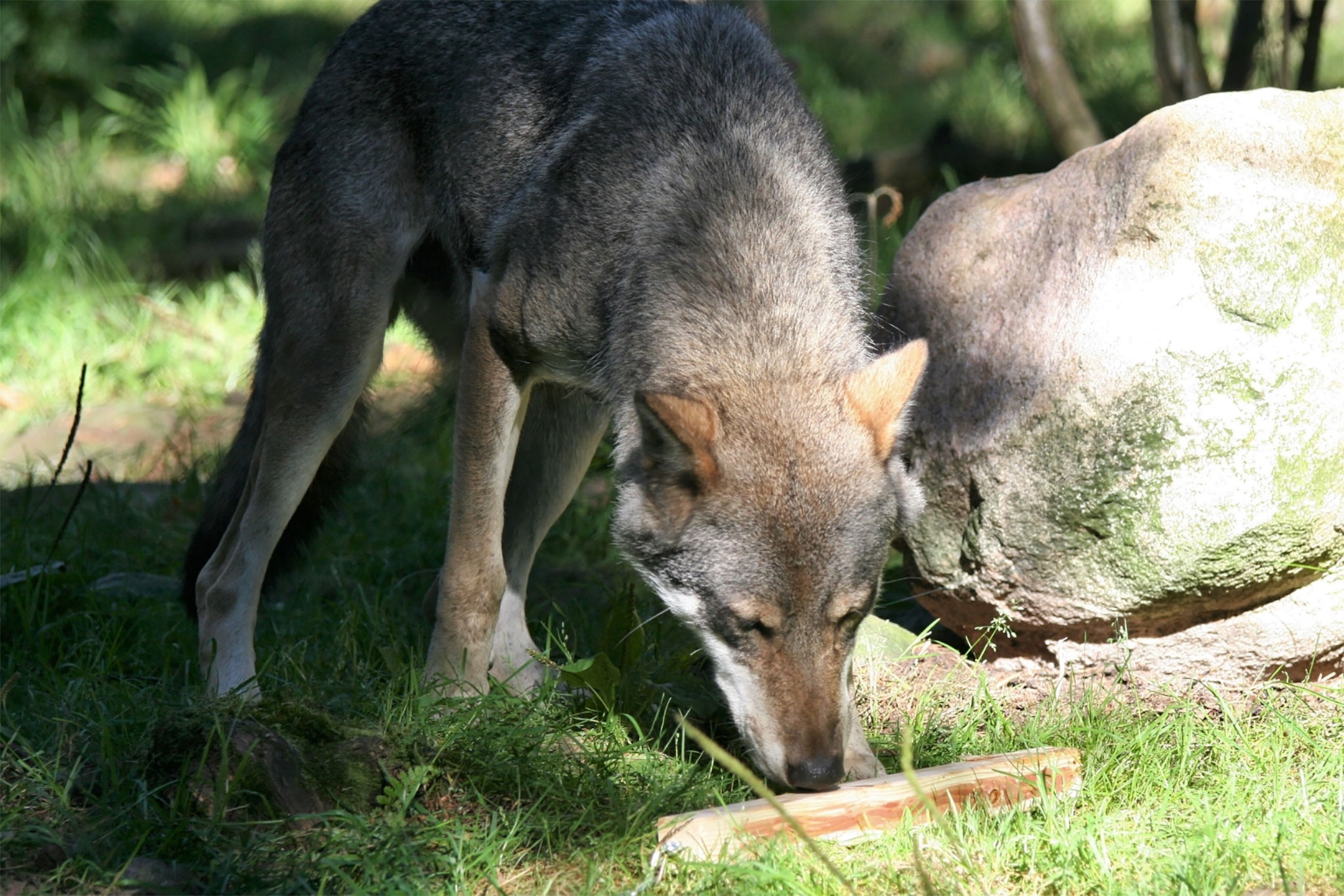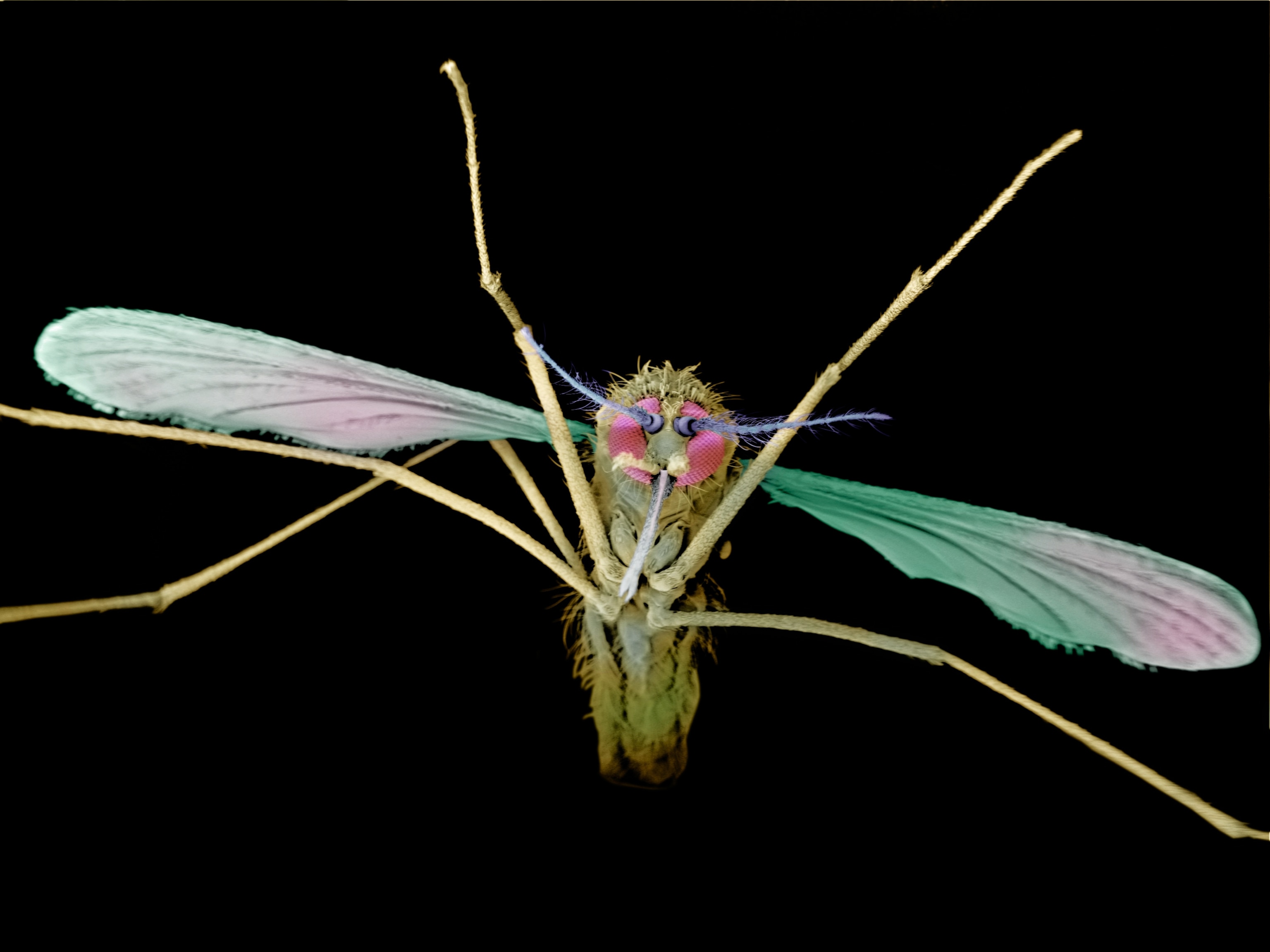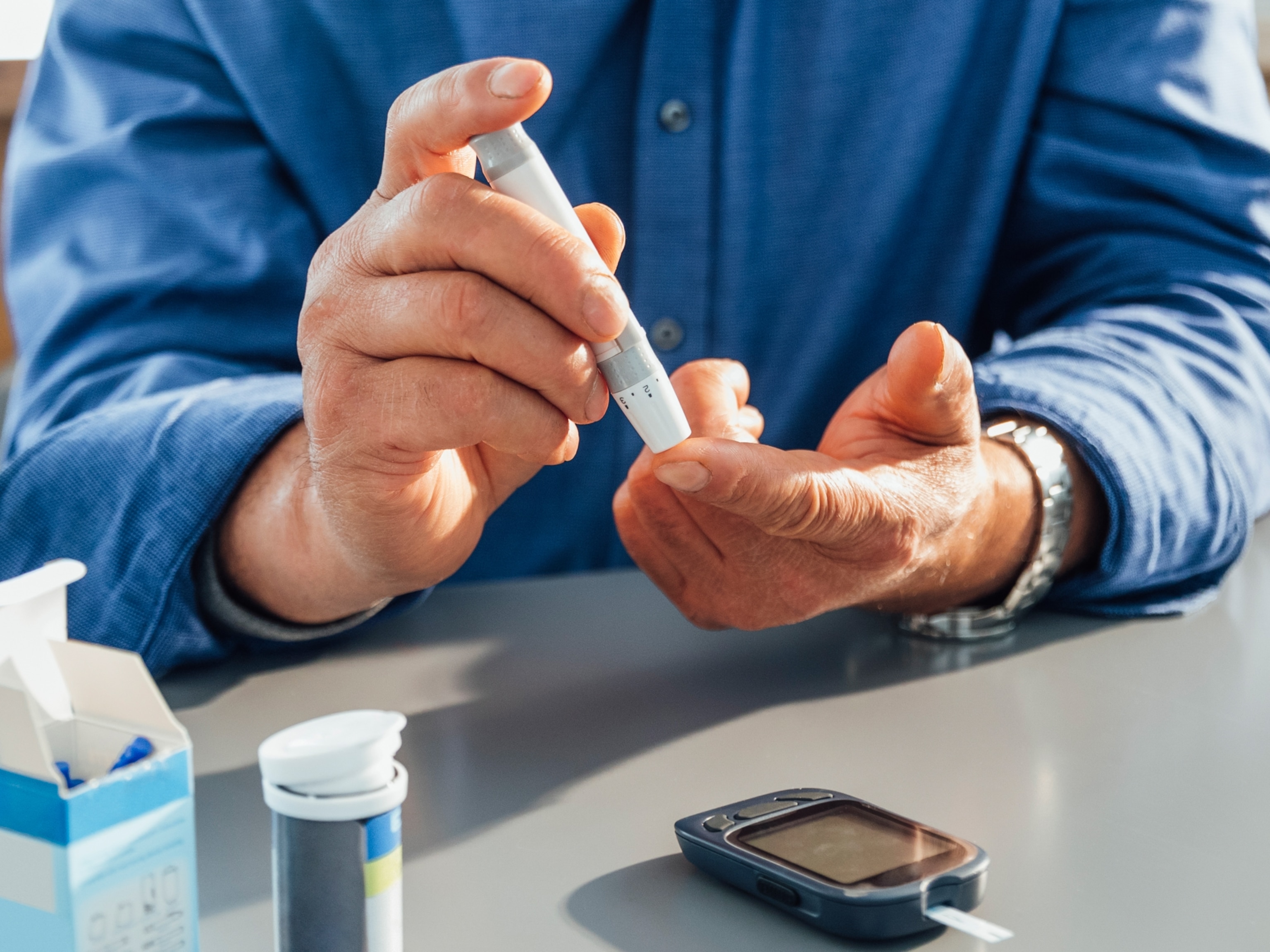
Why the Scent of Blood Lures Wolves But Repels People
When exposed to the smell of a single molecule found in blood, predator and prey had very different reactions.
A single molecule released from fresh blood, the one that gives it that metallic smell, causes humans to recoil and other animals to lick their lips in predatory anticipation, reveals a new study.
Published by researchers from the Karolinkska Institute in Sweden, the new paper in the journal Scientific Reports documents how predator and prey respond to a diluted, seemingly imperceptible molecule called trans-4,5-epoxy (E) -2-decenal, or E2D for short.
The chemical is released when lipids in blood break down after being exposed to air. Researchers were able to separate E2D from blood and diluted it to one part per trillion. That's akin to a single drop of the molecule being placed in an Olympic-sized swimming pool, said the study's lead author, Johan Lundström.
Often overshadowed by sight in humans, smell is actually one of the most essential senses among many animals. It influences everything from choosing a mate, to finding food. The research team wanted to see exactly how E2D influences animals and humans and, on a larger scale, how people respond to the presence of fresh blood.
"What's the ecological relevance of this odor?" Lundström said was the question they set out to answer.
Breaking Down Blood
E2D was first tested on blood-sucking flies. A solution with only E2D and a solution with an organic compound from livestock that did not contain the chemical were offered to the flies. Consistently, they chose the E2D solution.
Next, researchers tested the chemical on a wolfpack of seven wolves living inside a wildlife refuge. Using logs, they laced one with E2D, another with a fruity solvent, and a third they left as an odorless control log. When exposed to E2D, the wolves licked their lips and became possessive of the log as if it were a fresh kill.
To see how the chemical would impact a prey species, the researchers then turned to mice. In the cages of captive mice, the researchers placed an odorless solvent at one end and blood at the other. Mice exposed to blood were consistently repelled and retreated to the opposite end of the cage. The blood was then replaced with E2D, and mice showed the same response.
"If your life depends on some type of food, and there are chemical cues that you can use it will be a high adaptive value to be sensitive to that odor," said Artin Arshamian, one of the study's authors. "Vice versa if you are the food, it would be good to get early cues that an animal that wants to eat you is approaching, or is close by."
How Did Humans React?
To see how humans would react to E2D, Lundström and Arshamian rounded up 40 male and female college students. When E2D was pumped through tubes into the students' nostrils, they tended to move backward by a fraction of a millimeter, which the researchers say is a common sign of aversion. They also secreted more sweat than when exposed to the control.
Notably, however, when asked to rate the smell as pleasant, unpleasant, or neutral, students largely rated it as neutral.
Arshamian points out that exposure to E2D doesn't necessarily indicate an aversion to blood.
"One important factor is that learning is really important in olfaction," he said.
"We aren't disgusted by blood until we learn what blood means," said Rachel Herz, a Brown University professor and author of That's Disgusting. Herz was not involved with the study but is an expert on how smell influences human behavior."Just about all of our responses to smell both positive and negative are learned through experience, as well as the context in which the odor occurs."
The study authors are quick to point out that more research needs to be done before they can say for sure that an aversion to E2D is more innate or subconsciously learned over time.
Lundström suspects the response is more innate. He theorized that the humans' prey-like response stemmed from an early human ancestor that evolved from eating insects and vegetables to one that became what he called an "opportunistic predator."
"Now, we have become a top predator, but naturally we're not top predator," he said.
In a study published in the journal Chemical Senses, Herz found that people are most sensitive to smells in the early and mid-evening. This adaptation could help warn people of the presence of predators when visibility begins to diminish.
In the next iteration of their experiment, Lundström hopes to test E2D on human participants separated by profession and age. He theorizes that people who regularly come in contact with blood, such as surgeons or hunters, may have different responses from those who rarely encounter it. Similarly, he hopes to see if response to E2D changes with age and other life experiences.




